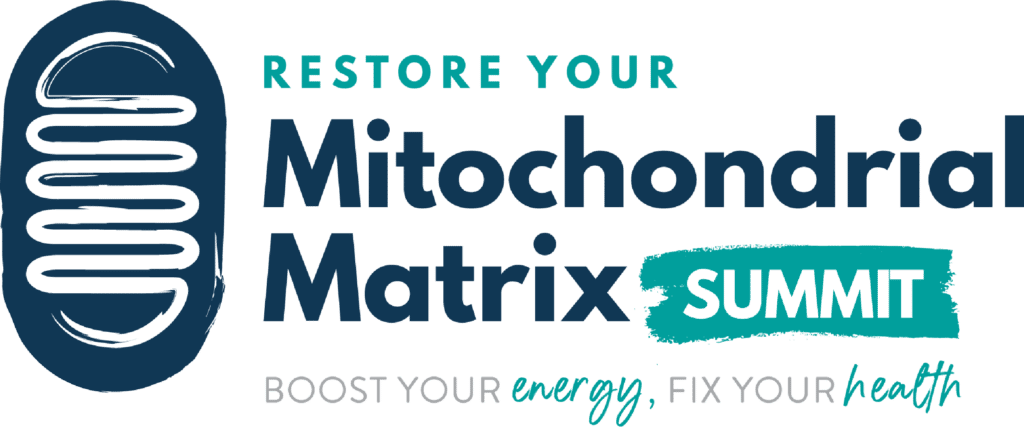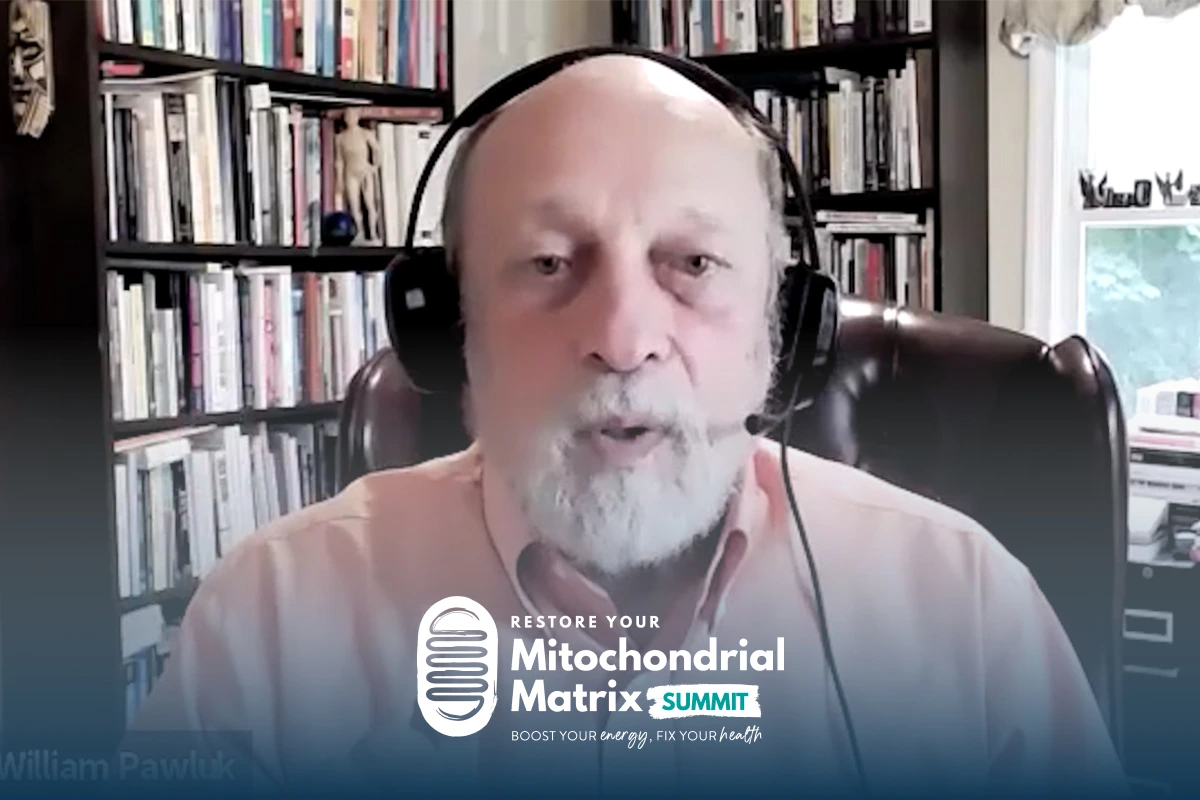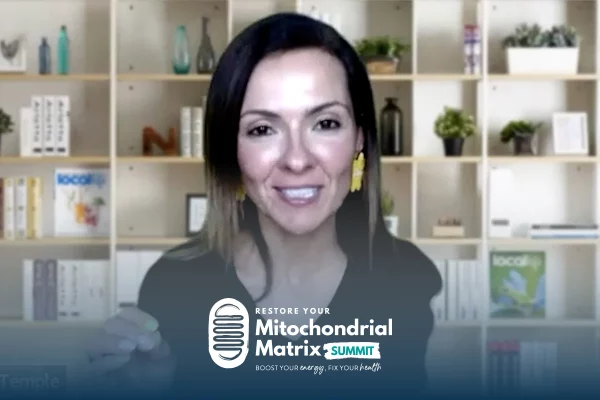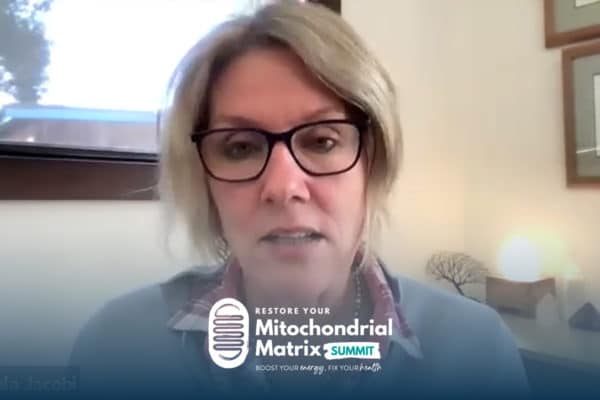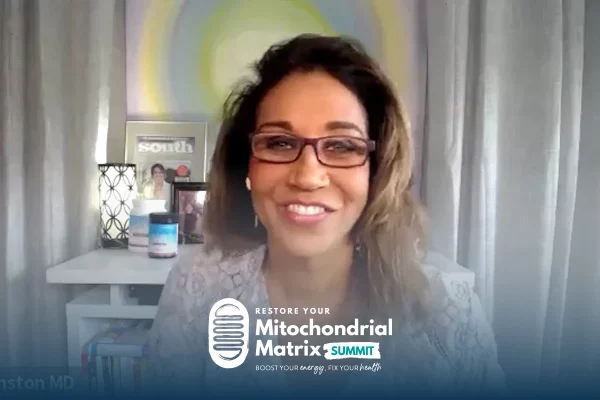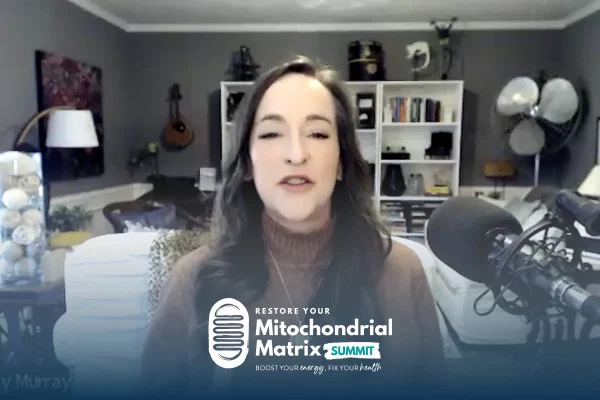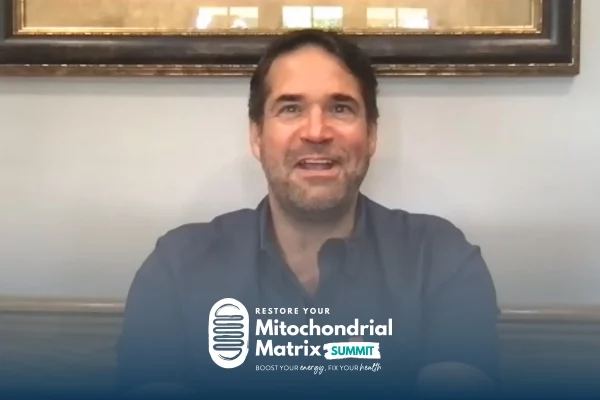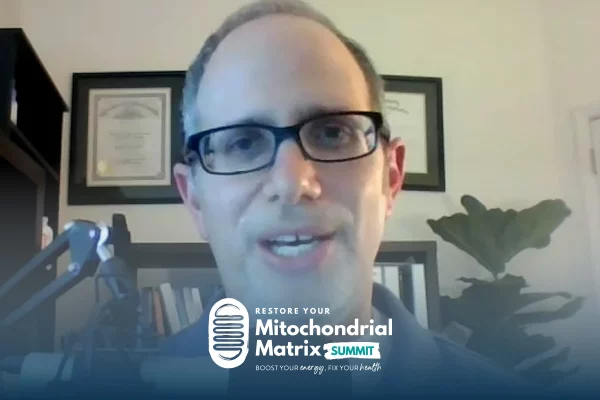Join the discussion below

Laura Frontiero, FNP-BC, has served thousands of patients as a Nurse Practitioner over the last 22 years. Her work in the health industry marries both traditional and functional medicine. Laura’s wellness programs help her high-performing clients boost energy, renew mental focus, feel great in their bodies, and be productive again.... Read More
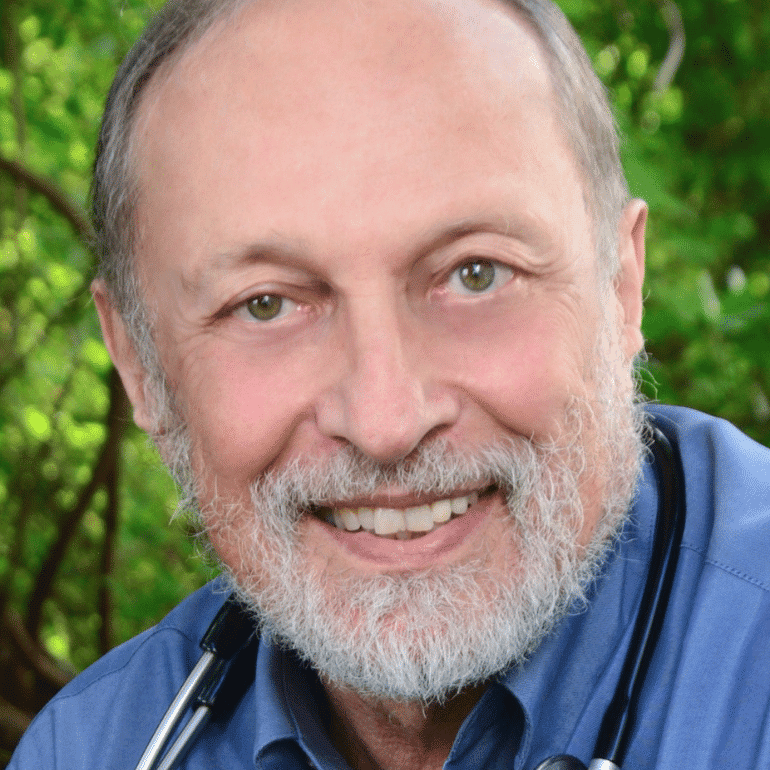
William Pawluk, MD, MSc, author of “Supercharge Your Health with PEMF therapy”, was recently a holistic doctor near Baltimore, MD. Previous academic positions at Johns Hopkins and University of Maryland. Training: acupuncture, homeopathy, hypnosis, energy medicine, nutrition and bodywork. Considered the foremost authority on the practical use of Pulsed Electromagnetic... Read More
- How PEMFs are positive compared to EMFs
- The basic actions of PEMFs in the body especially for mitochondrial function and energy
- Which PEMF devices are the best to use and own
- Find out if there are there risks with PEMF therapies
Related Topics
5g, 5g Exposure, Bleeding, Body Absorption, Bones, Brains, Cell Phone Usage, Cell Towers, Charge, Close Proximity, Cooking, Current Flow, Dose, EMF, Energy, Fat, Genetic Damage, Harm, Healing, Interaction, Magnetic Field, Microwaves, Mitochondria, Muscle, Open Loop, Pain Management, PEMF, Pulse Magnetic Fields, Radiation, Regeneration, Risk, Safety, Speakerphone, Stimulation, Supplements, Tissues, Tumors, Wavelength, Wifi, Wire, WoundsLaura Frontiero, FNP-BC
You’re watching the Restore your Mitochondrial Matrix Summit. I’m your host, Laura Frontiero. I’m bringing you experts to help you boost your energy and fix your health so you can build the life you love. And today my special guest is Dr. William Pawluk. Hi Dr. Pawluk, welcome to the summit.
William Pawluk, M.D., MSc
It’s a pleasure to meet you again and see you again, Laura.
Laura Frontiero, FNP-BC
Oh, so good. I got to meet you in person just four weeks ago or so, and it was wonderful and I’m really excited to bring your knowledge onto this summit. And I wanna introduce you to this audience. I fell in love with you from the minute we started talking. You are so dynamic. You have so much knowledge and so much well rounded experience in life. So you are a holistic MD. You’re trained in family medicine, functional medicine, nutrition, acupuncture, homeopathy, hypnosis, body work, energy, literally everything. You were assistant professor at Johns Hopkins and the clinical director for complimentary medicine at University of Maryland. And you are an authority on pulse electromagnetic field, PEMF and that is what we’re gonna get into today. PEMF for everyone who’s new to this. It’s used for pain management and healing and regeneration. You’re also the author of the most comprehensive book on healing with PEMFs called “Power Tools for Health,” and also “Supercharge Your Health with PEMF Therapy.” And you received an ACIM Lifetime Achievement Award in 2019 for work with magnetic field energy, or therapy. So thank you so much for being here. Can’t wait to just get into this and have everybody understand what PEMF is.
William Pawluk, M.D., MSc
Well, thank you for that. You’re making me blush. I’m gonna be the color of my shirt.
Laura Frontiero, FNP-BC
Yeah, well you well deserved, well deserved and okay, so like we’ve got your book here. This is “Supercharge Your Health with PEMF Therapy,” and I’m lucky enough to have a personally signed copy, ’cause I got to meet you in person, but I have to say this book is really easy to understand and I love that it’s written in big print, that’s the best part.
William Pawluk, M.D., MSc
For us, older people.
Laura Frontiero, FNP-BC
I know, it’s so good, so good. So we’re gonna get into some of the concepts that are laid out in this book. And I think the first thing that I’d love for you to kind of unpack for people is when you say PEMF, your mind thinks EMF, but they’re not the same at all. So what is PEMF versus EMF and why is PEMF good and EMF bad?
William Pawluk, M.D., MSc
All right, I think that’s an incredibly important distinction because it is very confusing to most people. And it actually confused me for a good part of my work with PEMF therapy for 30 years now as well. So I’ve more recently come to find a way to basically explain the differences. They’re still part of the electromagnetic spectrum. So they basically they’re in the same family, if you will, but very different. And because of those differences, that’s what explains the differences between safety and risk. So EMFs, let’s describe EMFs first. So EMFs are like microwaves, cell towers, wifi, et cetera. So those magnetic fields essentially are broadcast into the environment. They’re to what I call open loop. So they’re broadcasting to the environment and they go on for infinity. They go on forever. They lose intensity with distance, like all other radiation does, but they still go on forever. So they’re in the environment and we’re constantly being bombarded by them, whether it’s microwaves, cell towers for cell phone communication or it’s radio radio signals or television signals or the radar that’s in our environments as well, depending on how close you live to an air airport, but they’re all over the place.
So that’s EMF. Now EMF tends to be extremely short wavelengths. And because they’re very short wavelengths, they get absorbed by the body and that’s the basis behind microwave ovens, right? The very short wavelengths, you increase the power, you put it very close to the emitter, and then basically you cook whatever you you have in the microwave oven. That’s what microwaves do. They get absorbed by the body and that’s why they are risk. And that’s why 5G is even more potent and potentially even greater risk for people. Most of that risk happens. The closer you are to the radiation or the longer the exposure is. So if you’re not close to the radiation and you’re getting really dosed heavily, or you’re farther away from the radiation, but just have dosing, continuously throughout a day. So EMFs are absorbed and that’s why they’re risk. And they create genetic damage. They heat the tissues. They basically are cooking you. And you could tell when you have somebody holding a cell phone to their head, if you look at their ear where they take the cell phone away, it’s very red.
Laura Frontiero, FNP-BC
Yep.
William Pawluk, M.D., MSc
So that ear was being cooked and the brain next to it is also being cooked to some extent.
Laura Frontiero, FNP-BC
Yep.
William Pawluk, M.D., MSc
When you look at the opposite ear, the ear opposite to the one that they were holding their cell phone to. It’s not red, or it’s at least not as red. So there’s a little bit of reflex response in the body with the vascular system, but it’s not quite as red. Now, PEMFS are pulsed magnetic fields and they’re created by current flow through a wire. So that’s called the right hand rule. So my thumb is the direction of the current and the magnetic field is perpendicular to the current. So whenever the wave of current goes through that wire, the magnetic field goes like this. It always collapses back on itself. So that’s a closed loop. It’s not a wavelength. It doesn’t go out into the environment. It’s limited by the intensity of the wire, the voltage flowing through the wire.
And by the fact that it’s closing back on itself with every passing of the wave. So it’s absorbed by the body. I’m sorry, it passes through the body. It’s not absorbed by the body because the wavelengths are much longer. Well, we’re not dealing with wavelengths anyway. So wavelengths only matter if you’re transmitting into space or they like the waves on a pond. ‘Cause they go on basically until they hit an obstruction where they can’t go anymore or they weaken down and go away. But pulse magnetic fields just pulse. It’s not a wavelength at all. And they do pass all the way through the body completely, completely, nothing in the body stops the magnetic field. Even if you have metal in your body, it’s not going to be blocked by the metal. It basically goes around the metal.
Laura Frontiero, FNP-BC
Okay.
William Pawluk, M.D., MSc
So bones, brains, muscle fat. It doesn’t matter what the tissue is. It’s as if the body was air to a magnetic field. So think of it this way. A pulse magnetic field is a bit like the air blowing through the trees. You don’t know it’s there, unless the leaves are moving. You can’t see it, right? If you get wind blowing against you, you can tell there’s wind, ’cause you have provide resistance to it. But essentially a magnetic field passes through the body completely without being obstructed in any way, obstructed or used up.
Laura Frontiero, FNP-BC
Okay.
William Pawluk, M.D., MSc
So interaction with the body of that magnetic field does not change the magnetic field one bit. The magnetic field doesn’t care whether there’s a body there or not, it’s still a magnetic field. It’s just gonna keep on doing what it does. And that’s the beauty of pulse magnetic fields is because they don’t get absorbed by the body. They don’t get used up by the body, but as they pass through, they stimulate the body. So what they’re doing when they stimulate is they increase energy in the body. They do that by causing increases in charge and that’s that’s called Faraday’s law. So as you increase charge, you increase energy in the tissues and then bingo, the body has, now I can do more. Now I can jump over tall buildings.
Laura Frontiero, FNP-BC
Okay, so PEMF healthy. EMF, not healthy. Now PEMF, go ahead.
William Pawluk, M.D., MSc
That’s what I’m saying. EMF is not necessarily harmful. As I said, it depends on the dose. Depends on how close, how much dose you get at one time. So a very weak dose over time may create some change, small changes in the tissues of the body, but it may not be harmful. In fact, we use microwave level of magnetic fields in medicine to help to heal the body. We close wounds. We help to decrease bleeding. We actually will fry, cooking now, cooking warts or cooking tumors on the skin. So we use it in the body purposely to do that kind of work, but it is damaging mostly it’s less so to be helpful than damaging. That’s the primary difference.
Laura Frontiero, FNP-BC
And when we’re thinking about 5G and phones up to the head, that’s not gonna be good for us. That’s damaging.
William Pawluk, M.D., MSc
Well, if you have a phone up to your head for two seconds is probably not gonna be a big enough exposure to be a really big concern. Now, if you happen to have chemical sensitivities or if you have mold exposures and your immune system is hot and you’re over wired, then yes, even five seconds is enough to cause to, you’re sort of jangle. But generally speaking, it’s the amount of dose. So I do not recommend holding a cell phone to your head. There’s no reason for you to hold a cell phone to your head.
Laura Frontiero, FNP-BC
Just put on speakerphone.
William Pawluk, M.D., MSc
There’s something called speaker.
Laura Frontiero, FNP-BC
Yes.
William Pawluk, M.D., MSc
And then you could use wired transmission to your head. And that’s safer than even a Bluetooth. Bluetooth is not that safe either. And you see people walking around with their Bluetooth in their ears, right? All day long, that’s radiating, constantly. Bluetooth is on all the time. Your cell phone is on all the time. Unless you put it on airplane mode, it’s on all the time and you’re holding it in your pocket. You’re getting cooked.
Laura Frontiero, FNP-BC
Yeah. So it is safe though, to have your PEMF device on all the time. So here’s mine. I got this from you. It’s a flex pulse. And I literally had this on all day yesterday because I woke up with one of those crook kinks in my back, I was like, what did I do? Did I sleep funny? And so I had this on my back while I sat here in this office and worked and it was literally on for probably six hours yesterday.
William Pawluk, M.D., MSc
No problem.
Laura Frontiero, FNP-BC
Exactly.
William Pawluk, M.D., MSc
So let me give you a little story, but not only six hours. My wife broke her left little toe on lawn furniture, middle of the day. Purple bent slightly to the side, bruised, clear bruising, broken toe. So I did the standard medical thing, which you buddy tape it and then you put her in a platform shoe. You can’t go into a regular shoe for a while. Usually it’s a week to two weeks. So she did magnetic field therapy, just there’s a device similar to yours, put her over the area of the fracture, wrapped around the foot and kept it on 24/7. So basically she kept it on from midday until the next morning. Next morning, she woke up. No bruising, no swelling, no pain.
Laura Frontiero, FNP-BC
Amazing.
William Pawluk, M.D., MSc
Okay, but it’s a fracture. So that means it’s not gonna heal overnight. So she did it for another 24 hours. Again, no pain. The next morning, after another 24 hours of you, she walked a mile in tennis shoes. Okay, then she did it for another 24 hours, walked three miles in tennis shoes. And that was it, that was the end of the story.
Laura Frontiero, FNP-BC
Well, that’s amazing. That’s incredible. Well, let’s get into how this supports your body and helps heal. We’re talking about mitochondria on this summit. So I want you to tie mitochondria into it as well. But what are the basic actions of the PEMF in the body for mitochondria function, for energy, for healing, what’s happening there?
William Pawluk, M.D., MSc
All right, so in that book, “Supercharge Your Health,” I describe about 28 different, 27 different actions of magnetic fields. And there are many more. So these are science based. So we’ve got the evidence to show you that it actually has those actions. So I’m not just guessing. I’m not just hypothesizing and it’s not my idea. So basically because of those many, many different actions, you increase circulation, you reduce swelling and then tissue, you help with inflammation. You’d reduce inflammation. You stimulate healing, you stimulate stem cells. You stimulate nitric oxide. The increased oxygenation in the tissues, oxygen delivery into the tissue. All these different actions, 25 different actions are basically available by the body. The body chooses those actions, the magnetic therapy doesn’t choose the actions.
It’s just a nonspecific stimulus as it’s passing through it, stimuluses charge and then the body does what that charge, whatever it needs at that time. So all of those actions could be possible in five seconds. Most likely it’s gonna be three or four that are gonna dominate. So for example, improving circulation, bingo like that, like your muscles, your kink. So PEMSs have a natural painkilling action. It’s like taking a dose of morphine or codeine, natural pain killing, but that’s not good enough because that’s just masking. It’s just taking away the pain, but not solving the problem. It’s not healing the tissue. So magnetic fields first of all take away the pain or at least help with the pain. And then they start all the other actions that they do to try to heal the cause. In your case, it may have been a muscle spasm, a little tendonitis, maybe a little bit arthritis in your neck, some kind of in quotes injury, right? So then the magnetic field begins to relax the muscles. So it decreases the pain, relaxes the muscles. When you start to move your head and it can feel the tightness. So now after about an hour or so magnetic therapy, there’s no tightness, it’s gone.
Laura Frontiero, FNP-BC
Yep.
William Pawluk, M.D., MSc
So all those different actions are available through magnetic field stimulation.
Laura Frontiero, FNP-BC
Okay, so why doesn’t everyone have one of these gadgets? How come this isn’t in every doctor’s office? How come this isn’t in every household? It doesn’t make any sense to me because of the power of this.
William Pawluk, M.D., MSc
Well, when did you learn about it yourself?
Laura Frontiero, FNP-BC
Exactly, so I learned about PEMF about a year ago and it was all new to me. And of course I worked in Western medicine for 20 years before I knew anything about alternative integrative functional medicine, any of it. And even then I didn’t learn about this in my training. And of course it opens a world of possibility for healing. And why don’t we know more about it? Why isn’t this in every doctor’s office? Why aren’t people getting access to this?
William Pawluk, M.D., MSc
There aren’t in the medical system. There aren’t a lot of champions. So why would the medical system create a champion for a technology or a therapeutic? Most common reason is.
Laura Frontiero, FNP-BC
The money.
William Pawluk, M.D., MSc
Show me the money.
Laura Frontiero, FNP-BC
Yeah.
William Pawluk, M.D., MSc
The money influences behavior, right? The money allows you then to promote it, to advertise it, to tell people about it. You just can’t sort of, I can’t put it out on Facebook and then I said, all of a sudden, 2 billion people know all all about it, ’cause it doesn’t work that way. Magnetic field therapy has been around for over 50 years in Eastern Europe.
Laura Frontiero, FNP-BC
Wow.
William Pawluk, M.D., MSc
And my first book was actually a review of the science from Eastern Europe. And that was 20 years ago, right? So yes, the answer is that people like yourself or myself have to tell other people about it. And the more we whisper down the lane, the more we tell other people and they have good experiences, then they’re more likely to accept it. But there’s a problem. You can’t just talk about it. You can’t heal yourself by talking about it. You have to have a device and you have to be willing to get the right machine. You have to learn what machine is best for you and your particular needs.
And you’re gonna have to spend some money. Now it’s an investment. Now the fact that you have it, it’s not going to a doctor’s office or going to a practitioner’s office to get treatment. You could do that too. There are lots of doctors that now do this kind of therapy. And for your kind of problem, one treatment in an office may have been adequate, but if you have diabetes or you have arthritis or you have Alzheimer’s or you have pancreatitis, if you have liver disease, then you’re gonna need to do treatment on regularly for some period of time, until that tissue is healed.
Laura Frontiero, FNP-BC
Yeah.
William Pawluk, M.D., MSc
So that means you have to own it. And that people don’t often wanna make the investment. They’d rather try stuff that’s going to be paid for by insurance or Medicare or you know, Medicaid or whatever, before they wanna pay it for it themselves. Fortunately COVID has done an amazing job for us ’cause people couldn’t get their doctor’s offices and now insurances are changing as well. So that people’s deductibles and copays and so on are getting to be pretty big. So now you have to make your own decisions about when you start taking care of yourself. And so I think we’re gonna start seeing a lot more knowledge out there about PWEMF therapy and you’re gonna be a really important aspect of that dissemination of information.
Laura Frontiero, FNP-BC
I am, I wanna share. I wanna dig deeper into this and why everyone should have one. I wanna share a story about my daughter. If you’d like, I think this will be really relevant for people. So my daughter is 17 and like I said, I found out about PEMF a year before meeting you. So I actually have two devices. I have your, this one, which I got from you, which is superior to the other device that I have, which is more of a mat that you lay on. And that mat is really big, but this one packs more punch even than the mat that I have, which I learned from you once I learned how this works, but anyhow, I need to tell you about that mat first. So my daughter 17, she tried out for cheerleading and she had never cheer leaded in her life. So within about four days time, she needed to learn how to do a round over and cartwheels and learn a whole cheer for tryouts.
And you can imagine the toll she put on her body while she perfected that as much as she could within four days so she could try out for the team. And so on about the second day she came to me, she said, “Mom, I hurt so bad.” And of course she, “What can you do to help me?” And the last thing I’m gonna do is give her a pill. And so I said, “Honey, I want you to sleep on this tonight.” So we put the mat underneath her. She woke up in the morning. She could not believe it. She said, “Mom, I don’t know what kind of magic that is, but that’s amazing.
I’m sleeping on this every night. I feel so good.” And so she did it a couple nights in a row and she went on and she made it on that cheer team, never having cheered in her life. And I’m so proud of her, but I will tell you that having that PEMF underneath her made a difference for her. And the reason I’m sharing this is this is a 17 year old with very young cells and very rapid recovery. And even she was in so much pain. Can you imagine what this can do? If you have a chronic pain syndrome or you have any kind of chronic health condition, or you’re just trying to clear infections from your body or clear micro toxins or so I wanna give the ball back to you and talk more about this, but I just had to share how impactful this has been in my family. And so let’s talk about which PEMF devices are the best to use and own, because as you can tell, I’ve got a couple of them in my house and people are probably wondering now, “Well, what should I do? How do I know?” I mean, when you’re making this kind of investment, you wanna make sure you’re getting the right thing. So yeah.
William Pawluk, M.D., MSc
So I tell people to buy the book, “Supercharge Your Health,” the first book is much more technical that’s “Power Tools.” It’s more scientific. So if you want the knowledge, but the science behind it, and why, then the “Power Tools for Health,” book is better, but it’s not that practical. It’s reasonably practical, but not as practical as “Supercharge Your Health.” So to answer your question in that book, “Supercharge Your Health,” I go through the different types of magnetic fields. I go through all the different types of problems, and I go through the mechanisms of action. The fact that you improve circulation. So which magnetic fields improve circulation the best? Which magnetic fields decrease pain the best? Which magnetic fields, increase mitochondrial function the best? Et cetera. So the book gives you some guidelines that basically on how to think the magnetic field. So you have to think about your problem.
You have to think about the mechanisms of what caused your problem. You then have to think about what devices, what are you trying to solve? They have to match the device to the solution, and then you have to use it right. Right, so you need all of those components to be able to work, to have this work for you properly. So a whole body magnetic system, usually they’re very weak. Most of the time, they’re very weak. The ones that most people have that I talk to have not bought the right ones from my perspective, not for lifetime use, not for everything that you need down the road, but they’re generally working through acupuncture principles. They can increase circulation to some extent, superficially.
They don’t increase it deep because the magnetic field doesn’t go deep. It’s very weak, but be even though it’s weak, it’s still acting on the acupuncture points and meridians that are basically just underneath the surface of the skin. And magnetic field therapy that’s how I got started with it was through trying to replicate what I could do with acupuncture using magnetic fields. So at the very least it does that. So that would make you feel better, right? And that’s okay, ’cause it removed her pain and it’ll remove some of that superficial swelling that you would have from the physical work that she was doing that she’s not used to doing. So it would help with that. But often if it’s not good enough, the problem will come back. So if you do intensive treatment like she did all night, then you’re giving the body a much better fighting chance. The other machine that you have called the flex pulse. So the flex pulse is 200 gauss the typical whole body magnetic systems that people are buying are one gauss or less. So gauss, G-A-U-S-S is the measure of magnetic field intensity. So 200 gauss is gonna go much deeper into the body then one gauss. The Earth’s magnetic field is half a gauss.
Laura Frontiero, FNP-BC
Wow.
William Pawluk, M.D., MSc
And how well does the earth heal you?
Laura Frontiero, FNP-BC
It’s pretty amazing.
William Pawluk, M.D., MSc
Well, it keeps you in reasonable shape, but obviously we exceed the benefit of the Earth’s magnetic field regularly.
Laura Frontiero, FNP-BC
Yes, this is when you’re talking about, and we talk about earthing and going out and getting your bare feet and laying on the grass and getting your body in connection with the Earth’s magnetic energy, you’re getting a half a gauss.
William Pawluk, M.D., MSc
You’re connecting. Well, you’re just sitting there, you’re getting half a gauss.
Laura Frontiero, FNP-BC
Okay.
William Pawluk, M.D., MSc
But when you’re walking on the surface of the earth, you’re getting electrical changes between the earth and your body ’cause we’re biochemistry and the earth is minerals. And so the in minerals and biochemistry interact, so you can produce a little bit of charge, just a little bit of charge and earthing is better than nothing. So it’s gonna provide some benefit, not anywhere near as powerful as the magnetic fields.
Laura Frontiero, FNP-BC
Got it. So this one, this guy is 200 gauss.
William Pawluk, M.D., MSc
That’s 200. So that’s 400 times stronger than the earth magnetic field.
Laura Frontiero, FNP-BC
Amazing, Now I know you have, this is kind of a starter. When I was with you a few weeks ago, we sandwiched my body between a very powerful, powerful device where I laid and I literally had it on top of me, so.
William Pawluk, M.D., MSc
A blanket on top and you laid on the blanket, yes.
Laura Frontiero, FNP-BC
Yes, so talk about this versus that and why people might want that bigger one, versus this little guy.
William Pawluk, M.D., MSc
So that little one is very handy because you can’t put it on a shoulder pain or a neck pain or on a shoulder problem or an elbow problem or a hand problem. And you can like my wife, she just laid it on and she went out about her business, right? So she could run it continuously. So it’s handy because it’s portable, it’s battery operated and you recharge it and it could work for really well for superficial problems. Now, when you have to treat the brain prevent Alzheimer’s, treat TBI, brain injuries, multiple sclerosis, Parkinson’s then you need a strong enough magnetic field. So one of the key principles of magnetic fields is they drop off very rapidly as you move away from the coil, from the surface. That’s true about light at cold and heat and sound and so on. They just drop off very rapidly. That’s called the inverse square law. So you need about 15 gauss at the tissue. That’s inflamed to treat the tissue to help with inflammation. That’s the optune magnetic field for tissue inflammation reduction. 15 gauss. So if you have to go across the brain and you have to deliver 15 gauss from here to here to treat the brain then you need about a 4,000 gauss magnetic field because of that loss of magnetic field intensity.
Laura Frontiero, FNP-BC
Got it.
William Pawluk, M.D., MSc
So that system that you had then is designed to give you a more even magnetic field, high intensity that makes it much more efficient for you to do whole body treatment. So it’s gonna be most effective for things like osteoporosis or cancers, or like stage four cancers, autoimmune disease. And your whole body system is good for autoimmune, but that one is, is the best that’s called the Ultra-Flash. But you’re also talking about a $10,000 machine.
Laura Frontiero, FNP-BC
Yeah, and if it improves your quality of life that much and potentially saves your life and potentially saves your brain is worth it?
William Pawluk, M.D., MSc
Everybody has to make that determination for themselves.
Laura Frontiero, FNP-BC
Yes, yes.
William Pawluk, M.D., MSc
Right?
Laura Frontiero, FNP-BC
But there are lower cost, PEMF devices that people can invest in to start out with.
William Pawluk, M.D., MSc
And again, if you read the book, you’ll get some sense of what you need for a given problem, given series of issues. So the whole body system that you have is also very, very low intensity, but you can still spend five or $6,000 for a very low intensity machine. So you’re better off spending $7,000 for a 4,000 gauss machine than you are $6,000 for a one gauss machine.
Laura Frontiero, FNP-BC
Absolutely, absolutely. So let’s make sure everyone understands why you would wanna own one of these because I’m hearing you talk about brain health, traumatic brain injury, Alzheimer’s, dementia, autoimmune conditions, healing infections in the body, muscle aches, pains, bruises, improving mitochondria function and energy. I mean, is there literally anything that this doesn’t support?
William Pawluk, M.D., MSc
Well, actually I know that it helps healers as well. I know that it helps you to sleep better. That’s one of the benefits of PEMF therapy is for sleep. So it doesn’t really matter if it’s biology, it’s going to help. Now between up to about age 24, we’re growing. After age 24, we stop growing, right? So basically up to about age 24, we are actually in a growth phase and we are taking generally speaking, we’re staying ahead of damage. We’re staying ahead of breakdown. That’s called entropy. So the longer an organized system like a body exists, the more energy it needs to keep going because entropy happens, cells break down, energy, you need energy to maintain everything. So between 25 and 40, you start noticing the creeks and rattles, right? Up to, so basically you were growing. The pen is basically your curve of growth. So from zero to 40 to 24, you’re growing, that’s great. You’ll heal much faster, like your daughter, you heal much faster. Between 25 and 40 you hope that you’re relatively flat.
Laura Frontiero, FNP-BC
Yeah.
William Pawluk, M.D., MSc
That your process is a breakdown. And your process is of repair and regeneration are about equal. Now, if you play, if you’re a bio hacker and you’re doing competitive things, sports, racing and so on, then you’re not gonna be flat. You think you’re flat. You feel better doing that, but actually you’re harming your body. You’re creating more demand on your body than your body has the ability to repair. So you’re gonna go downhill. Now, the goal then is basically to try to get that curve as flat as possible. So if you’re doing magnetic field therapy every single day, you’re taking care of business before it happens before you even notice it, right? We have a hundred trillion cells in our bodies, approximately depending on who you read. And every single cell has about 5,000 biochemical processes per second, how much work is the body doing? Constantly.
Laura Frontiero, FNP-BC
A lot, a lot.
William Pawluk, M.D., MSc
How do you keep up with it?
Laura Frontiero, FNP-BC
Yeah.
William Pawluk, M.D., MSc
Certainly you need good nutrition. Certainly you need proper rests. Certainly you need a positive attitude that helps to feed the immune system. You need all of those elements, but what magnetic field therapy does is it makes all of that work better. It charges it to another level, takes it to another level of function. So you can take that curve. That’s slightly dipping and then just ratchet back closer to being flattened even. If you start too late in the process, you’re too far down the curve already. You’re not gonna take it from here to here. That’s not gonna happen. Especially when you’re 50 or 70 or older, it’s gonna take a lot more work to get you back up to that level. So that’s why you need to own it. So even if you’re 35, I know we all have priorities, but if you’re 35 and you’re reading active physically, and you’re doing a lot of hiking and walking and running and so on, then you’re damaging. You’re stressing your body.
Laura Frontiero, FNP-BC
Yeah.
William Pawluk, M.D., MSc
You have to feed. You have to recompensate for that stress. So everybody should own a system for the rest of their life. So an example that I use is that you don’t even know what damage is happening in your body. We don’t know. If your left little toe decides to get a hangout. You got a hundred trillion cells in your body. If your left little toe decides to get a hangout, how many cells need to be damaged before you notice you have a hangout?
Laura Frontiero, FNP-BC
How many?
William Pawluk, M.D., MSc
Millions, millions before you notice? ‘Cause our nervous system is designed to only pay attention to the biggest noises.
Laura Frontiero, FNP-BC
Right?
William Pawluk, M.D., MSc
Right? So you got cells that are being damaged along the way to develop that phenyl, right? That you’re not even aware of. And if you’re doing magnetic therapy on a regular basis, you’re taking care of business before it becomes a problem. And it becomes irreversible cell injury.
Laura Frontiero, FNP-BC
Yeah, this sounds to me, what’s coming up for me is prevention, prevention, prevention. I worked in Western Preventive Medicine for years. And unfortunately it was more of a reactive system where you’re looking for early detection of disease. You’re not actually really preventing anything. And this sounds like prevention to me, it sounds like aging in reverse to me too.
William Pawluk, M.D., MSc
Well, but it’s also therapeutic. So if you have a left little toe problem, or my wife had her broken toe problem, when she’s doing magnetic field therapy, what’s she taking care of?
Laura Frontiero, FNP-BC
She’s taking care of an injury. So we’ve got therapy and prevention all at the same time.
William Pawluk, M.D., MSc
At the same time. So even though it’s taking care of the injury, it’s still helping all kinds of other things going on in the body at the same time.
Laura Frontiero, FNP-BC
Right? Because what you said early on was you can’t choose your body can’t choose how this is gonna affect you. There’s all those 20. I think you said 27 different actions on the body. And any number of those could occur simultaneously as your body is exposed to the PEMF wave, your body’s gonna use it, how it needs it in that moment.
William Pawluk, M.D., MSc
However it needs it for things that you are not even aware are a problem they’re already being fixed before they even become a problem.
Laura Frontiero, FNP-BC
Well, it seems like a no brainer that everybody should have a PEMF, kind of as no brainer as everybody has a cell phone, right? It should just be a normal part of our day. It’s not hard while you’re sitting here to just attach this to your body and let it, let your body choose one of the multiples of the 27 things it could be doing to support you and just allow it to flow through you. Now, is there any risk with PEMF?
William Pawluk, M.D., MSc
All right, so I was gonna be, I’m gonna be a little facetious, but I’ll be I’ll be truthful after that.
Laura Frontiero, FNP-BC
Okay.
William Pawluk, M.D., MSc
The facetious, this is that one of the biggest risks with PEMF therapy is you may get the urge to put on a cape, Right? You’re gonna be functioning at a level that you never, it’s been a long time since you felt that way.
Laura Frontiero, FNP-BC
Yeah.
William Pawluk, M.D., MSc
The risks basically have to do with, if you have an organ transplant, you shouldn’t be doing magnetic therapy. We used to say if you have a pacemaker or implant electronics, you can’t do magnetic therapy. If you have an old pacemaker. So these days, most of the implant electronics are what we call MR conditional. So MRI-conditional, now, as you can do an MRI. So you can get up to 15,000 gauss of magnetic field intensity safely. So again, even the electronics is not a big deal. At implanted metal, if you have implanted metal, you better be doing magnetic field therapy. Why?
Laura Frontiero, FNP-BC
Well, I’m assuming it has to do with the metal, being a foreign body and toxic and your immune system trying to attack it all the time.
William Pawluk, M.D., MSc
Exactly, exactly, exactly, So when you have a joint replacement, a hip replacement or a knee replacement, yes, it got you off the edge of a cliff, right? But now you got a foreign body and everybody knows when you have a joint replacement, it’s got a life, it’s got 10, 15, 20 years at the most. And then it has to be revised. And research is actually showing that the breakdown of the bone is happening and is visible on MRI even within three to four years. And then it just simply progresses. So if you have a magnetic field, what you’re doing then is you’re causing bone stimulation, you’re reducing inflammation and you’re causing better integration of the metal with the body at regular magnetic field therapy then keeps that inflammation down, will preserve the prosthesis.
Laura Frontiero, FNP-BC
Got it.
William Pawluk, M.D., MSc
It will live, probably the rest of your life if you’re using magnetic therapy regularly.
Laura Frontiero, FNP-BC
Yeah, who wants to go back and have a revision of a joint?
William Pawluk, M.D., MSc
The surgery is absolutely horrid and there’s no guarantees. The guarantees with revisions are a lot worse than the guarantees with the first procedure.
Laura Frontiero, FNP-BC
Okay, so just to recap, who should not use PEMF under any circumstances.
William Pawluk, M.D., MSc
Transplants.
Laura Frontiero, FNP-BC
Transplants, but with a pacemaker, it sounds like a lower grouse device would be fine.
William Pawluk, M.D., MSc
So yes, so you can a adjust for that. And I talk about that in the “Supercharge Your Health” book as well. So if you have metal and you have a lot of inflammation to the metal and you present that tissue with too much magnetic fuel stimulation, your body could say, ouch.
Laura Frontiero, FNP-BC
Okay.
William Pawluk, M.D., MSc
And that’s another aphorism of magnetic therapy, magnetic fields don’t cause problems. They reveal problems.
Laura Frontiero, FNP-BC
Got it. I have a question about organ transplant. Are we talking solid organ transplant or anything?
William Pawluk, M.D., MSc
Yeah, solid organ transplant.
Laura Frontiero, FNP-BC
Okay, so if somebody’s had a bone marrow transplant, they could use this.
William Pawluk, M.D., MSc
But they’ve passed the bone marrow transplant. In fact, actually it is probably a good idea after your bone marrow transplant to be using magnetic field therapy because magnetic fields will stimulate white cell production. They’ll stimulate red cell production. They’ll basically re-energize the tissues.
Laura Frontiero, FNP-BC
Okay, got it. So almost the entire population could stand to benefit from this. The percentage of people with solid organ transplant is very small.
William Pawluk, M.D., MSc
Very small.
Laura Frontiero, FNP-BC
Yes, okay.
William Pawluk, M.D., MSc
Who’s not aging?
Laura Frontiero, FNP-BC
I’m aging.
William Pawluk, M.D., MSc
A five year old is not aging.
Laura Frontiero, FNP-BC
Yeah. Oh yeah, it’s incredible. So when we were at the event together and I got to be in your big device, what’s that device called?
William Pawluk, M.D., MSc
Ultra-Flash.
Laura Frontiero, FNP-BC
Okay, so here I will picture this everyone. So I like fashion and I was wearing the cutest spike heels ever around this conference and around the whole showroom floor for hours and hours, right? We were there days on end. And I just love these shoes. And my feet were kind of achy at by the last day of this. And your back starts to get a little uncomfortable and your body, like your energy just goes down. Plus just the energy expenditure of all the people you’re meeting and talking to. And it’s exhausting, right?
William Pawluk, M.D., MSc
And you’re standing most of the time.
Laura Frontiero, FNP-BC
Yes, and you’re standing most of the time. So you said, “Hey, get in this let’s give your feet a break. Let’s wrap this around your feet.” You guys, I think I laid in this for maybe 30 minutes. And when I got out of that, I felt like a new person. It’s like every cell in my body was ready to go again. And we still had a long evening ahead of us at this point. And it was remarkable. And then my shoes didn’t ache anymore. I could keep wearing my cute heels. It was really extraordinary. So I just wanna say I’ve experienced it. It’s amazing. I have goals of getting one of those big units for my own personal home use.
William Pawluk, M.D., MSc
We all should have one. And did you get the urge to put on a cape?
Laura Frontiero, FNP-BC
Pretty much, I felt invincible. I mean, I pretty much look at myself in the mirror every day and say, “You got this, you’re a superhero,” but that was pretty amazing, it was even better, yeah.
William Pawluk, M.D., MSc
That’s reinforcement to whatever image you have. Absolutely.
Laura Frontiero, FNP-BC
Yes, absolutely. Absolutely, this has been amazing. So extraordinary to have this information for you to share this on this summit. Will is there any other final words you’d like to share with our audience?
William Pawluk, M.D., MSc
Well, let’s talk about mitochondria.
Laura Frontiero, FNP-BC
Okay, let’s do it.
William Pawluk, M.D., MSc
Right? So what do magnetic fields do to mitochondria? So what are the reasons that people can feel like all of a sudden they wanna put out a cape? Is ’cause PEMF therapy increases ATP production by the mitochondria between 100 to 600%.
Laura Frontiero, FNP-BC
That’s a lot.
William Pawluk, M.D., MSc
Now, the problem with ATP is it doesn’t last.
Laura Frontiero, FNP-BC
No.
William Pawluk, M.D., MSc
Right? We are constantly making it constantly. We’re constantly using it, constantly making it. So while the magnetic field therapy, that’s why you get the urges put on a cape. The magnetic field therapy, gives you that sudden burst of energy, sudden production of ATP in the body and gives your body the ability to deal with business. ‘Cause that’s the function of ATP in mitochondria is to deal with business. The cell can’t function without it, right? It needs ATP as a basic fuel to do the work that the cell does, which means it translates into the cell working. Translates into the tissue working. Translates into the organ working, translates into the whole body working. So magnetic field therapy. That’s one of the major actions of PEMF therapy is to increase ATP production. And it does it in a very interesting way. Magnetic field therapy increases ATP but ATP by itself is nothing. It’s a resource. It doesn’t do anything, right? ATP has to be hydrolyzed. You have to strip off one of those phosphates for energy to be released. So magnetic fields therapy through the enzyme systems around ATP, it increase the production of ATP from ADP and an AD, right? And then it increases, it produces ATP that it hydrolyzes, it releases the energy and now it recycles it again. So it’s constantly recycling the ATP.
Laura Frontiero, FNP-BC
This is really important when people are trying to recover from injury, chronic health conditions, athletes who are are going for high performance. Even if you are a busy parent or you have a job and you’ve got a big important project or something coming up, can you imagine how this would influence your ability to be productive in the world with just this support to your mitochondria.
William Pawluk, M.D., MSc
With just this because again, ATP is ubiquitous. Every organ has it, right? Every tissue has it. Every cell in the body has ATP. So every cell needs it. So if you’re recovering from surgery, normally let’s say you have a wound, a cut. How long does it take for you to heal a cut? A surgical wound?
Laura Frontiero, FNP-BC
Days then weeks.
William Pawluk, M.D., MSc
Two to two to six weeks, right? Depending on vitality and nutrition, status and diet, whether you have diabetes or not, or you’ve been taking chemo, which destroys your capacity to heal. So if you’re using it on a regular basis, you decrease your healing time by about half.
Laura Frontiero, FNP-BC
That’s amazing.
William Pawluk, M.D., MSc
So if you have surgery, you’re basically the doctor. When you leave the office, when you leave the surgical office or the hospital or the outpatient surgery center, what does the doctor do when you leave?
Laura Frontiero, FNP-BC
Cross their fingers?
William Pawluk, M.D., MSc
That’s all you do, ’cause you say, “Okay fine, now I’ve done my part. You do your part.”
Laura Frontiero, FNP-BC
Yeah.
William Pawluk, M.D., MSc
What you’re doing then, basically is you’re leaving things to chance. You don’t account for what’s going on in that body. I know a plastic surgeon in Virginia Beach who will not do plastic surgery on somebody unless they’ve been on a nutritional program for three months.
Laura Frontiero, FNP-BC
Wow.
William Pawluk, M.D., MSc
And he says his results are spectacular and he gets no complaints.
Laura Frontiero, FNP-BC
That’s amazing. What’s coming to mind is I’m thinking of women who have C-section and they are out of the hospital, major abdominal surgery. They’re out the hospital within 24 to 48 hours. And now they have an infant to care for. And oftentimes not a lot of support. Could you imagine if being discharged with a PEMF device was the standard of care, what that would mean even to a young mother?
William Pawluk, M.D., MSc
Well, I do have a vision for eventually being able to set up programs where people would be able to actually do magnetic therapy after their surgery and recover much faster. I’ll tell you a personal anecdote. I had an elective C-sector. That would be elective. That would be elective.
Laura Frontiero, FNP-BC
Yes.
William Pawluk, M.D., MSc
So I had an elective appendectomy. I had a tumor on my appendix and we decided to remove it instead of just biopsy. So I had my procedure, a laparoscopic procedure on a Friday, Friday midday. So I was home. I stayed overnight that night because you’re dealing with your bowel. So typically you have to make sure you got to a return of bowel function. So the next day I went home, I started magnetic field therapy that night, actually, when I got home, I started magnetic field therapy and that was Friday, Monday, I was back at work. I had three stab wounds and I put coils like you have there coils on each of the wounds. And I was back at work on Monday.
Laura Frontiero, FNP-BC
That’s amazing. That’s amazing. I’m so thrilled to have this in my household to be able to use this with my family. And like I said, my goal is to get even more, another one, a big one. Will tell everyone where they can find you and where they can get your book, where they can get a PEMF device. And here’s the important thing and you touched on it, not all PEMF is created equal. And the devices that you have on your website are all top of the line. You’re gonna get.
William Pawluk, M.D., MSc
Tried and true.
Laura Frontiero, FNP-BC
Yes, so where do we find you? How do we get access?
William Pawluk, M.D., MSc
Well, again, what are the first ways you could get for yourself? Get information for yourself is to get the book “Supercharge Your Health with PEMF Therapy”
Laura Frontiero, FNP-BC
Here we go.
William Pawluk, M.D., MSc
Right? The second is drpawluck.com, D-R-P-A-W-L-U-K dot com. There’s a huge amount of information on drpawluck.com. I mean, it’s a library you could, I know you could spend weeks plumbing through the library, videos and podcasts and blogs. The list goes on and on. So there’s a ton of information and you can drill down, specifically to your particular interest. Hopefully, the hope is that the “Supercharge Your Health,” book will do a better job of that than a website can. ‘Cause there are limitations to what you could do with a website as well. So those are the two ways drpawluck.com and “Supercharge Your Health with PEMF Therapy.”
Laura Frontiero, FNP-BC
Excellent. Yeah, get the book because if you’re anything like me, I like to dog-ear put little sticky notes in it. Underline, I’m always the person who buys the audio book and then turns around and buys the real book because I want to be able, there’s nothing like being to read it.
William Pawluk, M.D., MSc
To go back on it. Yes, and audio is linear. It’s hard to find things. So in the book, I present 80 different health conditions and I give prescriptions for each health condition.
Laura Frontiero, FNP-BC
Excellent.
William Pawluk, M.D., MSc
What do you think about it? How do you use it? What devices are gonna be the best for it and then some supplement recommendations. So that is more prescriptive for those conditions. Now it’s again, it’s generally helpful. It’s not just disease specific. You don’t have to have a disease to use magnetic therapy. In fact, as I said, what we’re trying to do good part of the time is regular use prevention.
Laura Frontiero, FNP-BC
Yeah.
William Pawluk, M.D., MSc
It prevents problems.
Laura Frontiero, FNP-BC
Absolutely, this is healing on every level. As you mentioned, you don’t even know that you’re having a problem until millions of cells are involved. And there are literally millions and millions of processes occurring at every moment in your body and aging is occurring. So, I mean, I see this as a aging reverse, or slow down aging and kind of support all the micro injuries that occur as we…
William Pawluk, M.D., MSc
Micro injuries, but a lot of other things, the flex pulses, I designed the flex pulses with the idea that we wanted to stimulate the brain. So one program that we used for injury, for like a toe injury or for your back would be 10 Hertz. So 10 Hertz is what we call alpha rhythm. So each of the programs in there except for one, except for two are basically single frequencies. So there’s a single frequency for sleep. There’s a single frequency for anxiety. There’s a single frequency for brain fog for becoming more wide awake and alert. So it’s got a lot of those capabilities within it. And the website specifically for the flex pulse is called flexpulse.com.
Laura Frontiero, FNP-BC
Perfect flexpulse.com. Well thank you so much, Will. I really appreciate your time, your knowledge, your passion for this. You are helping change the world in such positive ways.
William Pawluk, M.D., MSc
We hope so.
Laura Frontiero, FNP-BC
You are. All right until next time everyone take good care. Bye, Will.
William Pawluk, M.D., MSc
Bye, thank you, Laura.
Laura Frontiero, FNP-BC
Yes.
Downloads
